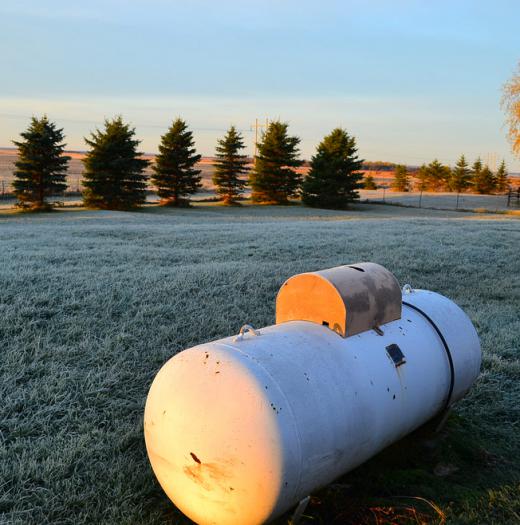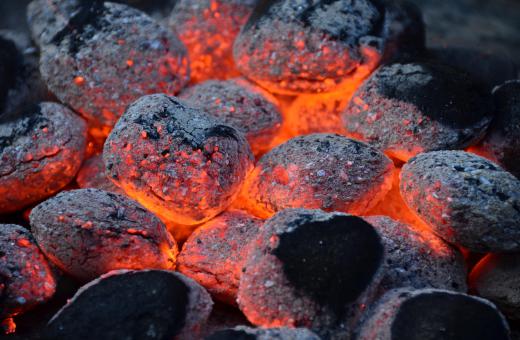What are the Different Types of Combustion Systems?
Combustion systems are chemical reactions between a material that can be burned as a fuel and the chemical compounds found in oxidants, substances that transfer oxygen atoms. The main purpose behind combustion is to create some sort of energy to produce the physical science definition of work. Essentially, it is the production of a certain amount of energy transferred by the force of heat and fire. Common examples of combustion systems include boilers, fireplaces, furnaces, gas burners and other heating systems.
Household appliances are one of the most common uses of combustion systems. In a boiler, a closed unit is filled with water or another type of fluid and heated to vaporize the fluid to supply heat to other devices. A fireplace, which generally burns wood or gas, is placed within an architectural construct for the purpose of heating or cooking. Furnaces, traditionally designed to manufacture ceramics or metals, use a fuel source to heat materials or the air itself. Likewise, gas burners use natural gas or propane mixed with the air to generate a flame, which can be used to cook or burn substances.

There are a number of different types of combustion techniques used in these systems, each requiring different levels of fuel and oxidants. Complete combustion essentially burns the fuel, usually a hydrocarbon, and produces very little secondary material. Pyrolysis, or incomplete combustion, occurs when the oxidant is not readily available or limited, causing the combustion system to be partially quenched. Low-temperature combustion without a flame is called smoldering, like a burnt out campfire. On the opposite end of the spectrum, rapid combustion is a situation in which heat and light are produced very quickly, such as in the case of thermobaric weapons, like bunker-busters.

Two different types of fuels can be used in combustion systems: liquids or solids. In the case of liquids, combustion occurs during the gas phase. Liquid is heated into a gas, which catches fire when mixed with oxidants. Solid fuels need three distinct phases to successfully work. The fuel needs to be preheated, followed by the production of gases which burn and eventually the solid fuel turns into charcoal.

Perhaps the most common form of combustion systems is the engine. This is designed in two different formats: the internal and external combustion engine. Internal combustion engines contain a chamber in which fuel and the oxidizer are mixed to produce energy. External combustion engines involve the heating of a fluid through a heat exchanger, producing usable work.
AS FEATURED ON:
AS FEATURED ON:















Discussion Comments
We have a boiler system that provides the heat for the radiators in my office building. I know people often say that this type of heating is much better than fan blown heat that comes from vents. I would have to say that I agree.
I think the biggest downside is the knocking that sometimes comes from the registers, but the heat seems much more even. I'm curious whether others agree. I would also be interested to know how the combustion efficiency of boiler systems ranks with other heating methods.
@kentuckycat - Good question. I think you've got the right idea on the internal combustion engine. One of the engine's strokes is the intake stroke that brings in air (with oxygen) from the outside. The fuel and air mixture is compressed so that when the spark plug ignites, a stronger reaction will take place between the two materials.
Similarly, a diesel engine can function without spark plugs, because the compression step makes the fuel so hot that it ignites without a spark. I don't know enough to answer the other parts of your question, though.
I'm intrigued by the explanation of how solid fuel works. Charcoal is often formed from wood. Does that mean that wood can be considered a fuel? I've heard a lot about biomass energy in the news lately. Is this related in any way?
The article mentions that when combustion of a liquid happens, the fuel is turned into a gas which then catches fire when mixed with oxidants.
What is the igniting factor for the fuel? Does the fuel catch fire because it mixes with the oxidants, or do the oxidants allow the gas to combust because it is at a hot enough temperature? From my understanding of engines, the fuel is compressed, which heats it up. Then a spark ignites the fuel generating power. Is this right?
I'm not familiar with external combustion engines. What are some examples of things they might be used for?
What is special about the bond that fuels make with oxygen that allowed them to combust so easily?
I remember from chemistry class long ago that oxygen is necessary for things to burn. That is why putting a glass over a burning match will make it go out. I never did quite understand what was so special about oxygen, though.
Along the same lines - is oxygen only mentioned because that is the most common gas in combustion, or are there any other elements that can combine with chemicals to make them flammable?
Post your comments